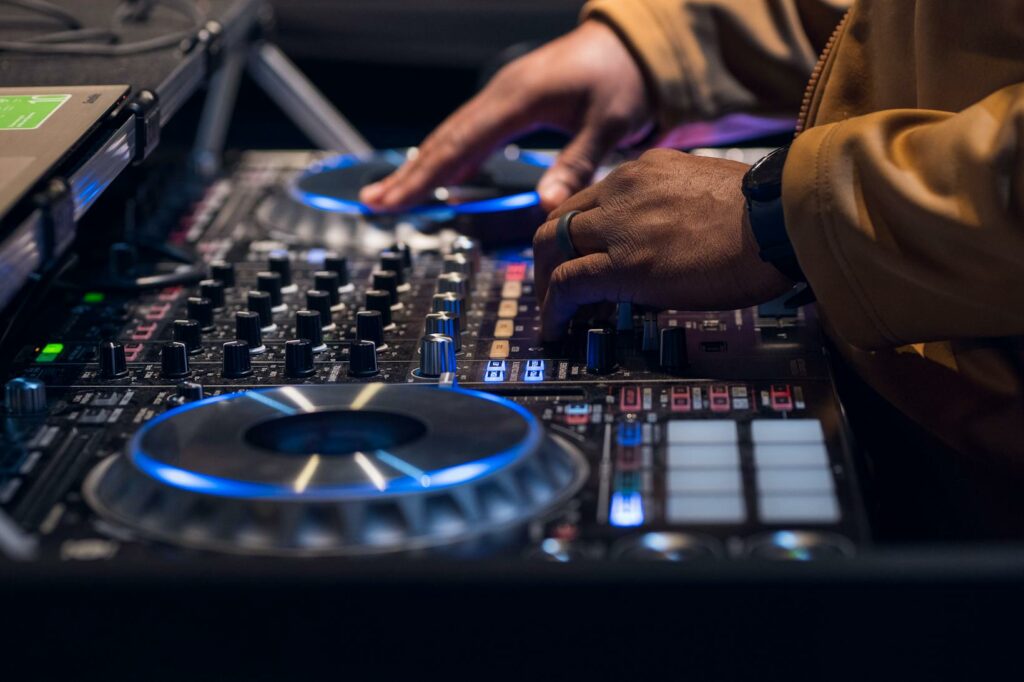In an era where technology intertwines with every facet of life, music stands at the forefront of this digital revolution. Tech music, a genre born from the fusion of cutting-edge technology and traditional musical elements, is reshaping how audiences experience sound. From AI-generated compositions to immersive virtual reality concerts, tech music is pushing the boundaries of creativity and innovation.
As artists and engineers collaborate, they’re crafting new auditory experiences that captivate and challenge listeners. This genre isn’t just about the music itself; it’s about the tools and platforms that transform how music is created, distributed, and consumed. Whether it’s through sophisticated software or groundbreaking hardware, tech music is setting the stage for the future of sound.
Tech Music

Tech music integrates advanced technology with traditional musical principles to create innovative auditory experiences. This genre encompasses AI-generated music and virtual reality concerts, driving the evolution of music consumption and production.
AI-powered platforms enable composers to generate complex musical pieces, enhancing creativity and efficiency. Examples include OpenAI’s MuseNet and Google’s Magenta. These tools allow musicians to explore new compositions, often blending genres effortlessly. In virtual reality, concerts offer immersive experiences that transcend physical and geographical limits, effectively reaching global audiences without constraints.
In the performance space, AI voice cloning combined with virtual reality creates immersive, interactive concerts. Artists can perform with digitally reconstructed voices in lifelike 3D environments, enabling fans around the globe to experience hyper-realistic concerts without being physically present.
Collaboration between artists and software engineers results in cutting-edge tools and applications. Platforms like Ableton Live and Logic Pro X provide artists with the capabilities to produce high-quality tracks, reflecting the fusion of tech and music. This symbiosis not only influences creation but also impacts the way music is distributed and consumed.
Augmented and virtual reality devices amplify these experiences, delivering multisensory engagements. Head-mounted displays and surround sound systems empower artists to create environments where audience interaction becomes integral to the music experience.
History And Evolution
Tech music blends innovation with traditional soundscapes, reshaping musical evolution. Its journey from initial experimentation to modern adoption reflects technological advancements and creative exploration.
Origins Of Tech Music

Innovations in the mid-20th century set the stage for tech music. Techniques like musique concrète, which involved manipulating recorded sounds, laid early foundations. Electronic instruments, such as the theremin, demonstrated music’s capacity to transcend conventional boundaries. By the late 1960s, synthesizers revolutionized music production, enabling artists like Wendy Carlos and Kraftwerk to explore new auditory territories.
Key Milestones In Development
1982 marked a turning point with the introduction of MIDI (Musical Instrument Digital Interface), which standardized electronic communication between instruments. The late 1990s saw digital audio workstations (DAWs), like Pro Tools and Cubase, gain popularity, enhancing artists’ production capabilities. By the 2000s, the rise of AI-driven music, with platforms like OpenAI’s MuseNet, expanded possibilities further. The integration of virtual and augmented reality in performances emerged in the 2010s, offering immersive experiences and enhancing audience engagement.
Notable Artists And Influencers
Tech music, a fusion of technology and traditional music, boasts numerous artists who shape its landscape.
Pioneering Figures

Kraftwerk, hailed as pioneers since the 1970s, integrated electronic instruments and computers, influencing generations. Brian Eno, an innovator, introduced ambient music with his groundbreaking productions. Wendy Carlos, famed for her use of the Moog synthesizer in the album “Switched-On Bach,” expanded electronic music’s possibilities. Jean-Michel Jarre’s large-scale synth performances and albums brought electronic music to mainstream audiences, showcasing its expansive potential.
Contemporary Innovators
Imogen Heap, known for incorporating technology with her Mi.Mu gloves, adds unique, interactive elements to performances. Björk employs cutting-edge tech, using VR and AI in album creation and live experiences. Daft Punk brought house music into mainstream, utilizing specialized electronic equipment and iconic visual aesthetics. Grimes merges generative algorithms with her distinctive sound, pushing boundaries in music production. They effectively leverage tech, redefining music’s creative scope.
Music Production

Tech music continues to reshape the musical landscape by merging traditional elements with cutting-edge technology. This innovative genre not only expands creative possibilities but also enhances audience engagement through immersive experiences. As AI and virtual reality advance, tech music’s potential grows, offering artists new tools to redefine sound and performance. The integration of blockchain and wearable technology further propels this evolution, promising a future where music creation and consumption are more interactive and personalized. With its transformative impact, tech music stands as a testament to the endless possibilities at the intersection of technology and artistry in the digital age.

